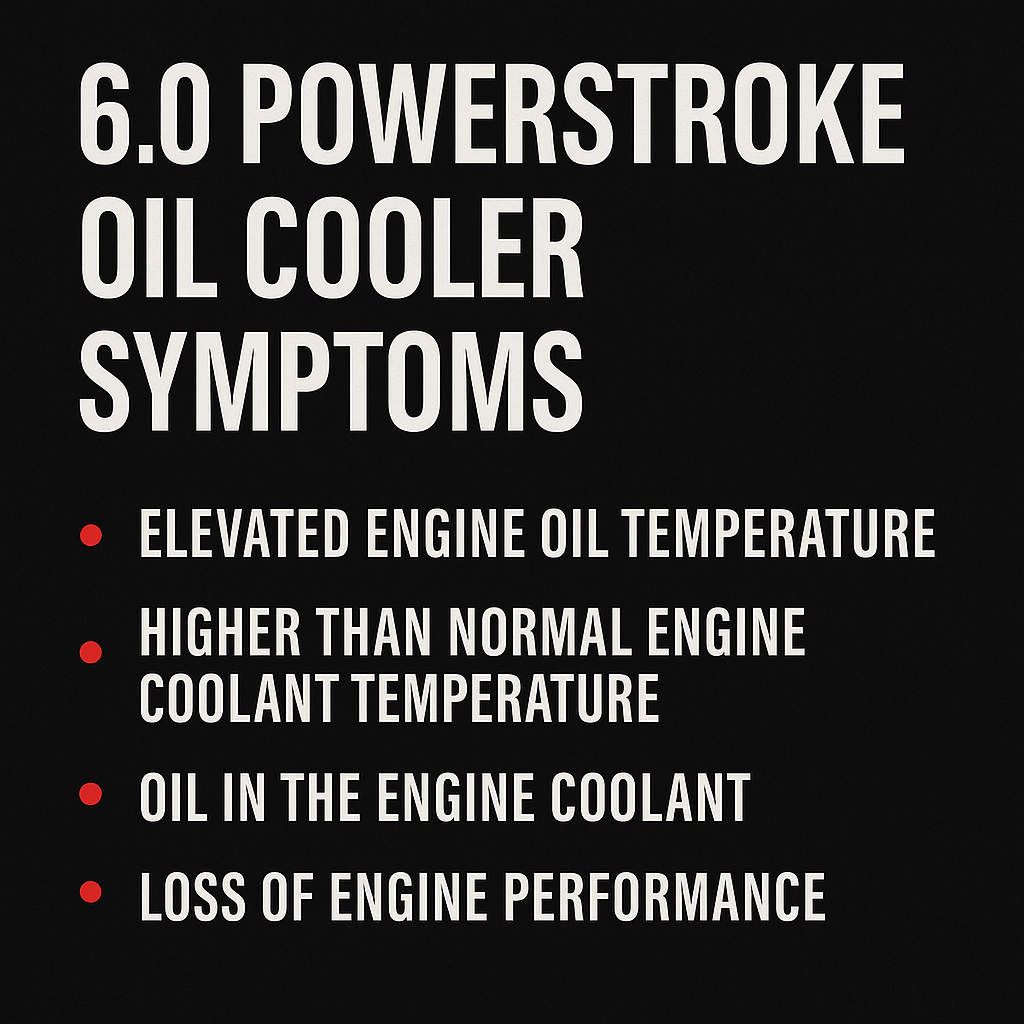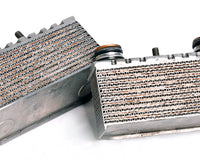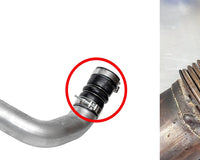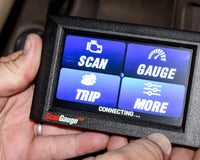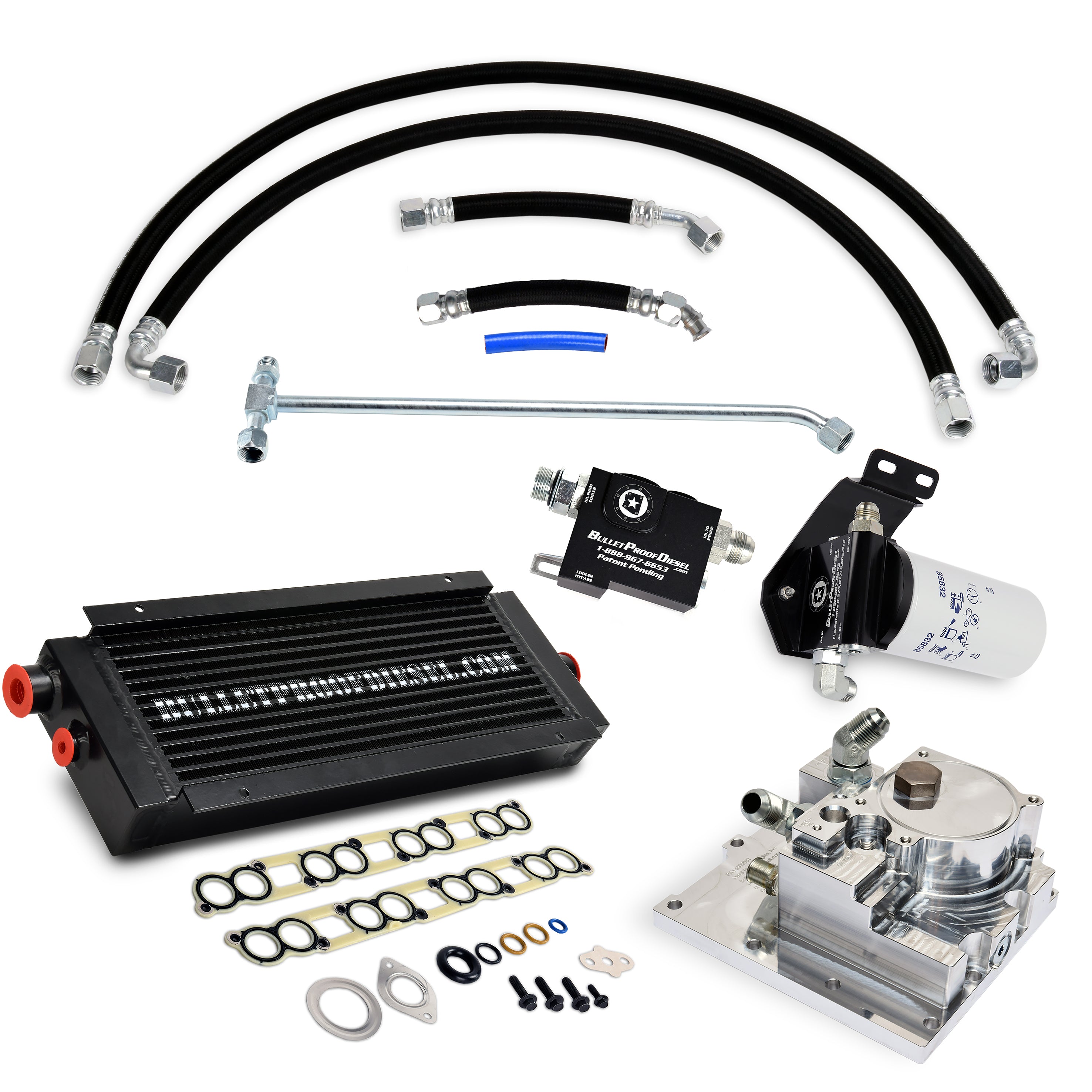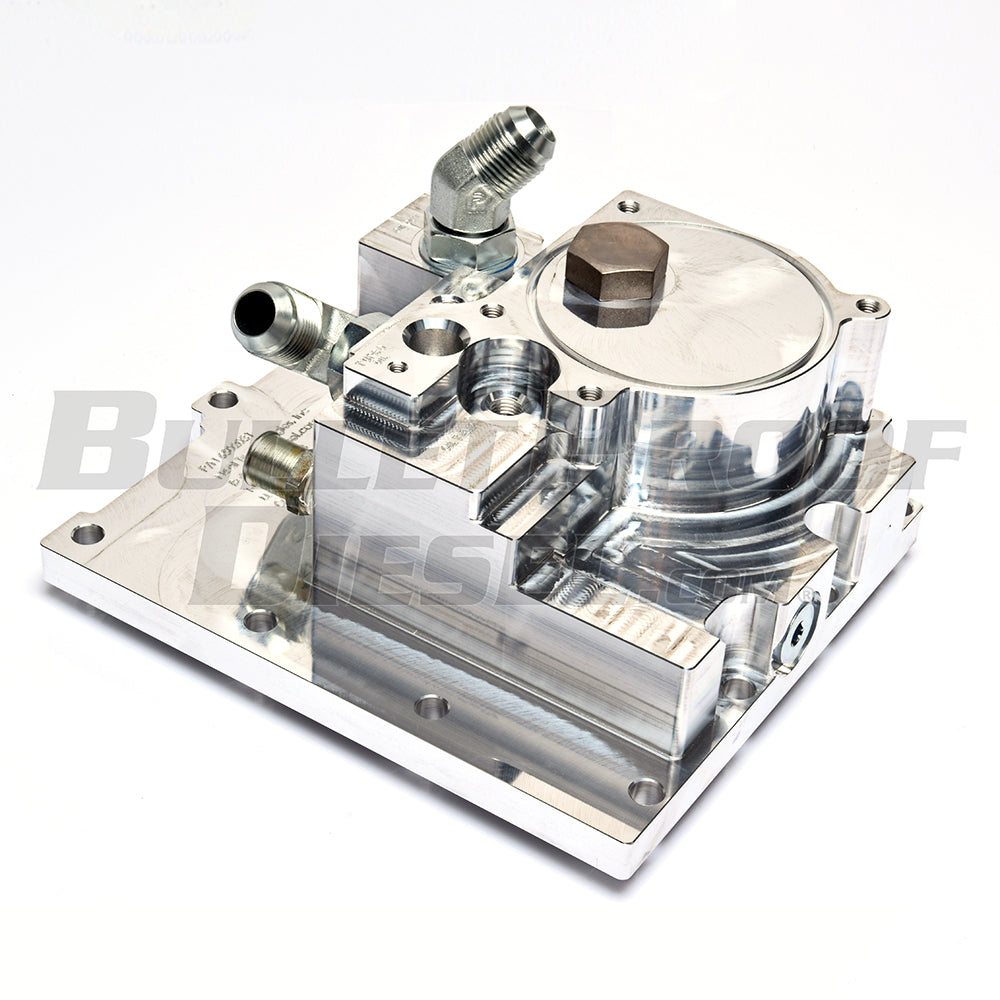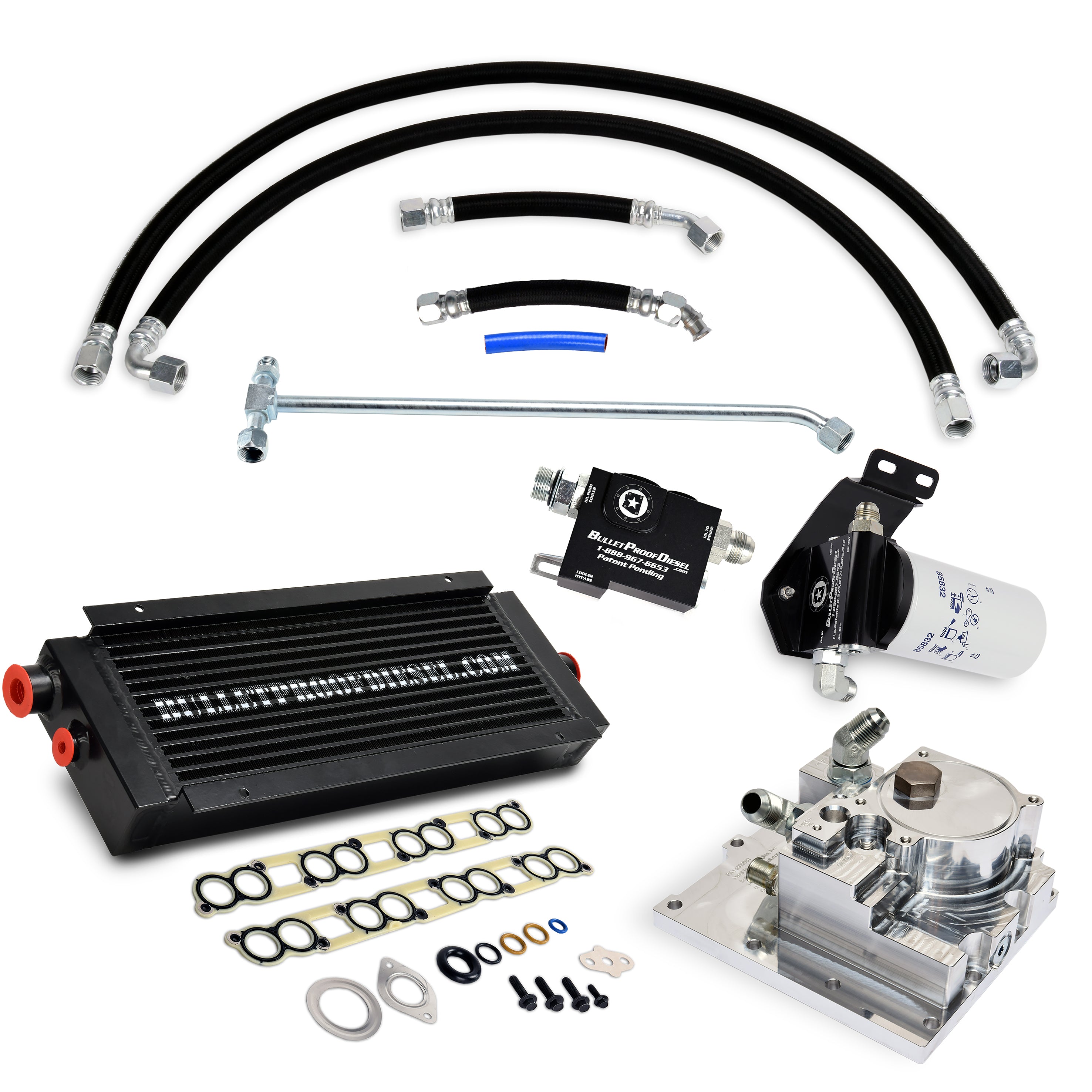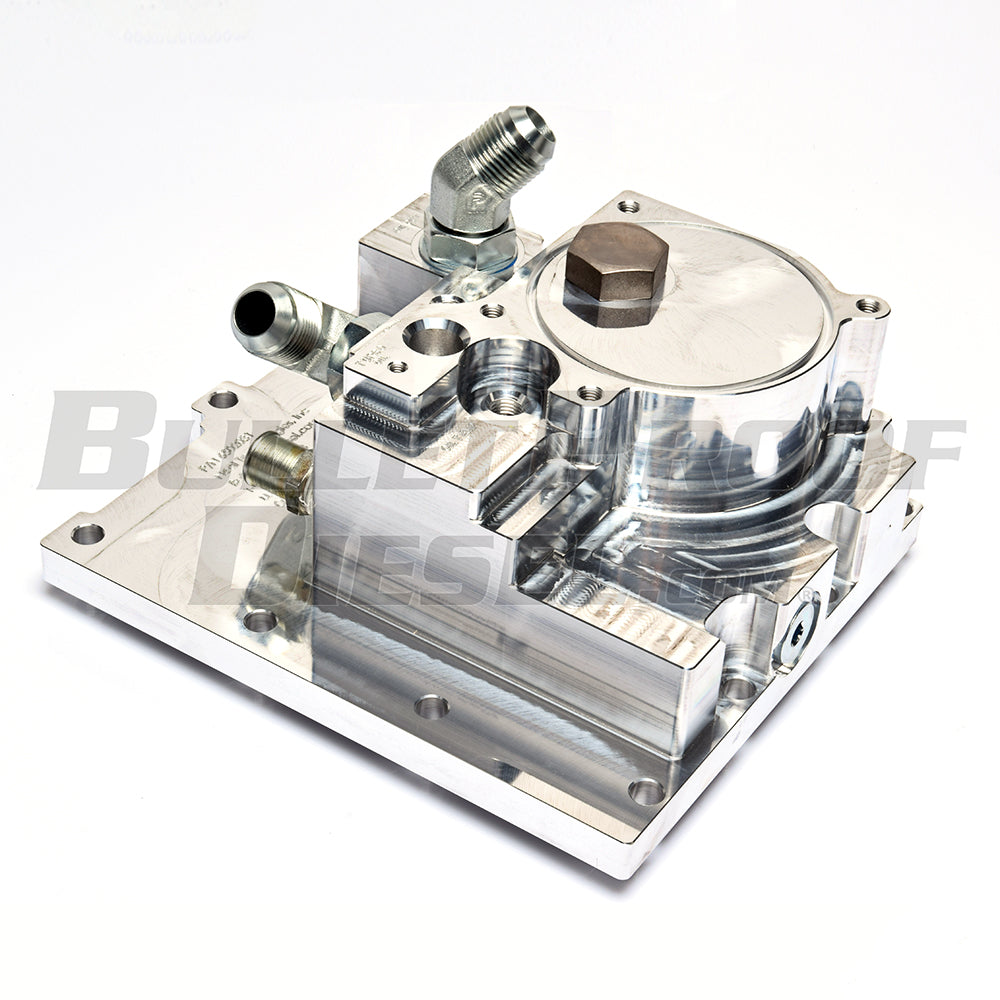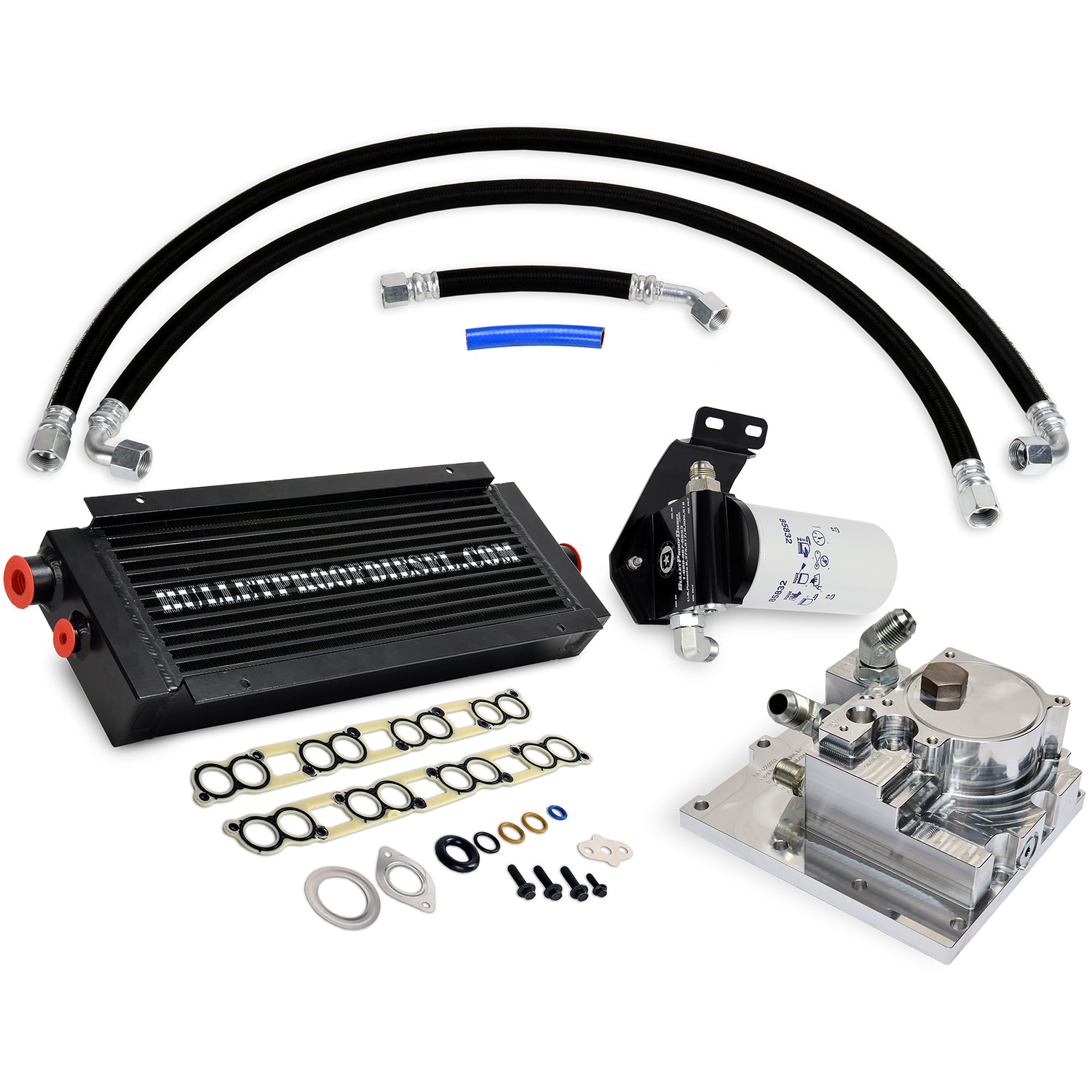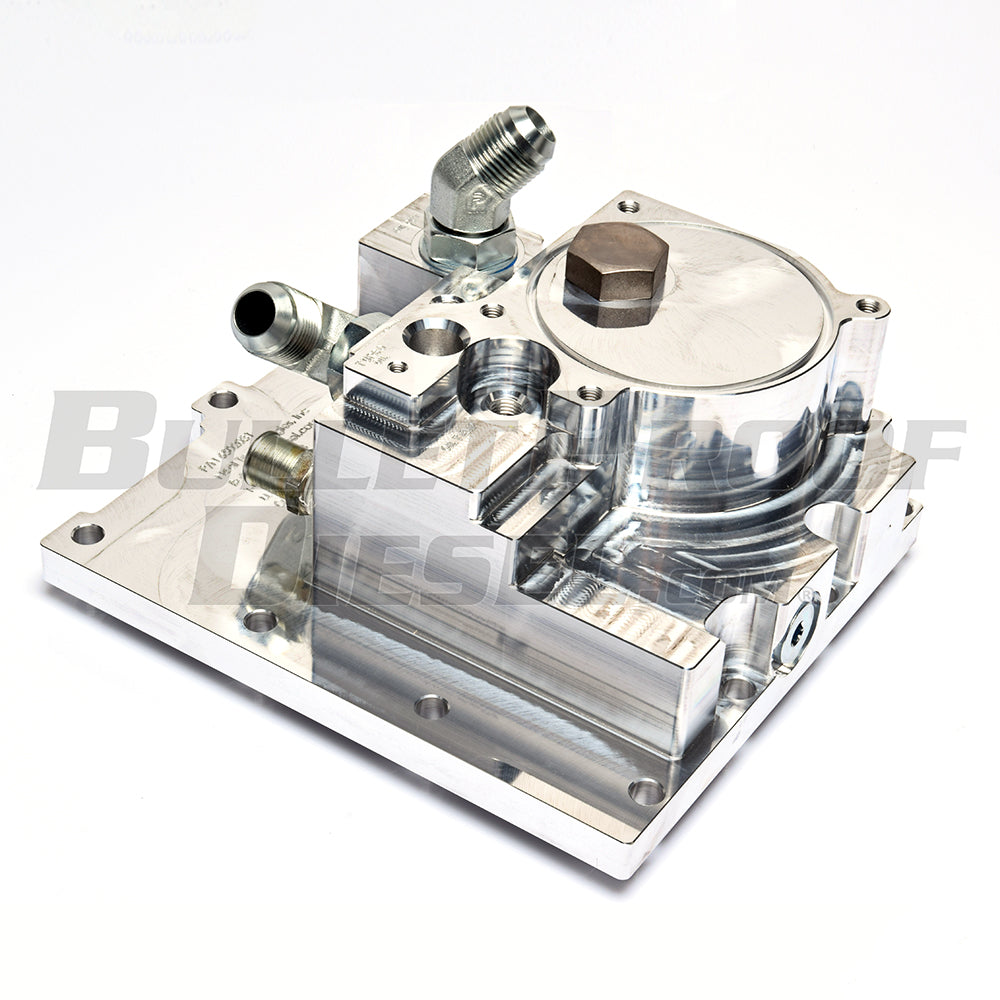The factory engine oil cooler in a 6.0L Ford Powerstroke has a big task and is responsible for managing the optimal temperature of the engine oil. While a fairly simple design, it accomplishes this by transferring the heat from the engine oil to the engine coolant through small passageways and tons of surface area in a small package. During engine warmup, it also acts as a sort of oil heater, as the engine coolant typically can warm up faster than the engine oil because of the coolant thermostat system. This balance is critical because if the engine oil gets too hot, it has the potential to break down, losing its ability to lubricate the engine properly. If the engine oil is too cold, it may not flow properly and may not lubricate effectively. Proper engine temperature regulation is especially crucial when the engine is under heavy load or running at high RPM.
In this blog post, we’ll cover the most common signs of a failing oil cooler on a 6.0 Powerstroke, why these issues happen, and what steps you can take to fix them. With years of experience at Bullet Proof Diesel, we’ll also explain how our upgraded oil cooler designs tackle the root causes of these problems.

Why the Factory OEM Engine Oil Cooler Fails
Unfortunately, the factory engine oil cooler in the 6.0L Powerstroke is prone to both clogging which can cause poor coolant flow downstream to the EGR cooler and rupturing which can cause a real mess in the engine cooling system. The factory engine oil cooler features very narrow coolant passageways that are susceptible to becoming plugged up with debris and contaminants floating around in the cooling system. When these passageways become restricted, coolant flow is reduced, heat transfer ability is diminished, and the oil temperature can rise, potentially causing long-term damage to the engine. Eventually the cooler becomes restricted enough to cause the EGR cooler to overheat, crack and fail. throughout the engine.
Top 6 Symptoms of a Failing 6.0 Powerstroke Oil Cooler
High Engine Oil Temperatures
A clear sign of trouble is when your engine oil temperature consistently exceeds the engine coolant temperature by more than 15-20 degrees under unloaded normal highway cruising conditions. While there may be a greater than 15 degree difference under heavy load and towing conditions, even with a properly working engine oil cooler, it is still worth keeping an eye on.
We will talk more about how to properly monitor these temperatures later in the article.
Increased Exhaust Gas Temperatures (EGT)
When the factory engine oil cooler is compromised, there is the potential for engine components to run hotter, causing EGT’s to climb. Excess heat can lead to poor performance and shorten the lifespan of critical parts like the turbo. Another good example of this - specifically on the 6.0L Powerstroke engine - are the piston squirters. The bottom of the piston is continuously being sprayed with engine oil to help cool the piston.
If the oil cannot properly cool the piston, serious engine damage may occur.
Coolant and Cooling System Contamination
When the factory engine oil cooler fails, pressurized engine oil is pushed into the engine cooling system and mixes with the coolant. This of course is quite a mess and will typically require replacement of cooling system components such as the radiator, coolant hoses, degas bottle and even the water pump. Engine oil being present in the cooling system also affects overall cooling system performance, which can lead to overheating and other more serious problems. In some cases, the failure is severe enough to cause engine oil to be pushed out of the degas bottle and resulting in an external leak as well.
Engine oil in the engine cooling system is a sure sign of a factory oil cooler failure.
Poor Engine Performance or Limp Mode/ Defueling Condition
In many cases when the factory engine oil cooler becomes restricted, the heat transfer capability drops and causes higher than optimal oil temperature. The engine computer (ECM) is continuously monitoring engine oil temperature and has the ability to defuel or force the engine into limp mode. To the driver, this could feel like a sudden loss of power, a feeling like the engine is running out of fuel, or even an amber wrench shaped warning light illuminating on the instrument cluster. Typically, this type of defuel condition is when the engine oil temperature reaches over 255° or the engine coolant reaches 235°.
EGR Cooler Failure
Specifically on the 6.0L Powerstroke engine, the coolant flow - as it relates to the oil cooler and EGR cooler - starts at the water pump, is routed to the engine oil cooler, then to the EGR cooler. This means that as the factory engine oil cooler becomes restricted on the coolant side, it causes a restriction of coolant flow to the EGR cooler . When the EGR cooler is starved for coolant, it is very likely that the part overheats, cracks internally and allows engine coolant to enter the intake manifold, exhaust system and/or the combustion chamber. Obviously - engine coolant entering the combustion chamber is a bad thing, but is extremely devastating as it normally causes an excess in combustion chamber pressures compromising the cylinder head gaskets or even the cylinder head bolts.
It is very common to have cylinder head or head gasket problems, as a result of EGR cooler failure.
How to Diagnose Factory Engine Oil Cooler Problem
At Bullet Proof Diesel, we recommend using a digital data monitor like the Edge Insight CTS3, the ScanGauge II or ScanGauge 3 product to track your Engine Coolant Temperature (ECT) and the Engine Oil Temperature (EOT). These data monitors are very capable and will allow you some insight into what's going on under the hood. In regards to the factory engine oil cooler and problems associated with it, you’ll want to be sure to watch ECT and EOT during unloaded, highway speed conditions. If you were to see a consistent 15° degree difference - with the engine oil hotter than the engine coolant - this may indicate an oil cooler that is becoming restricted. Think of it this way - the larger the difference between ECT and EOT - the more restricted the engine oil cooler is becoming.
What to Do If You Have These Symptoms
If you notice any of the above symptoms, we suggest the steps below:
-
If you are towing and see ECT above 235° or EOT above 255°, try to reduce vehicle speed and engine load.
-
Check your engine coolant level and inspect the degas bottle for engine oil contamination.
-
Use a scan tool to monitor ECT and EOT to verify engine oil cooler performance.
-
Replace the factory engine oil cooler with an upgraded air-to-oil version from Bullet Proof Diesel.
The Bullet Proof Diesel Solution
Bullet Proof Diesel didn't just redesign the factory engine oil cooler, we engineered a solution that will last a lifetime. The BulletProof Oil Coolers for the 6.0L Powerstroke engine:
-
Come backed by an industry leading lifetime parts warranty.
-
Features an externally mounted air-to-oil heat exchanger for maximum efficiency.
-
Options for a remote mounted spin-on style oil filter or retaining the factory oil filter.
-
Significantly improves coolant flow to the EGR cooler, helping to prevent overheating and failures.
-
Eliminates issues caused by debris and contaminants in the cooling system.
-
Live product support by a dedicated and experienced technical and sales team.
-
Packages include all of the necessary components and detailed instructions for the installation.
Don’t Ignore Oil Cooler Symptoms
The 6.0L Powerstroke engine is a powerhouse and really can be a reliable, long lasting engine, but its factory engine oil cooler is a known weak point. Catching the signs of a failing oil cooler early can save you from major engine damage, turbo failure, and costly repairs. If you notice oil temperatures rising, cooling system contamination, or poor engine performance, dont wait for a breakdown.
Upgrading to a BulletProof Oil Cooler System helps to ensure better temperature regulation, long-term durability, and a peace of mind whether you are towing heavy loads and just driving around town.
Disclaimer
This article is intended for educational purposes. For accurate diagnostics and installation, consult a qualified diesel technician. Always follow Ford’s service guidelines and use the correct tools and safety procedures.

